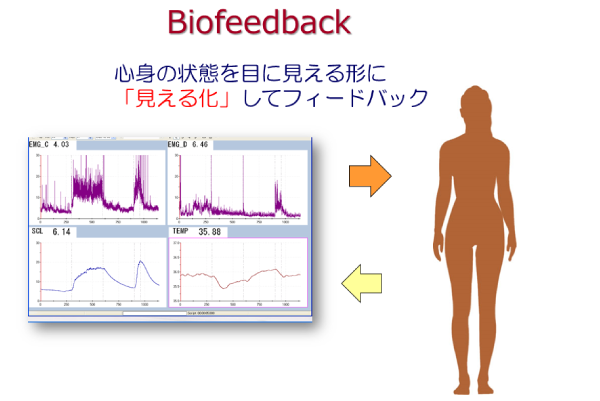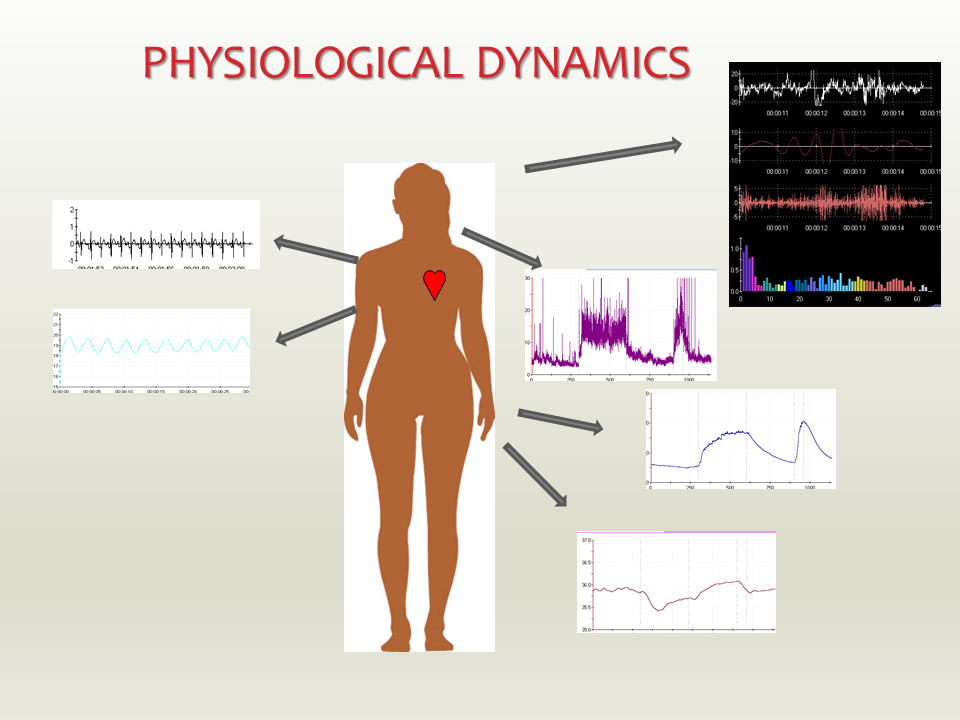Biofeedback, as the word suggests:
“Bio” refers to the body and “feedback” means to provide information.
It aims to record changes in the body by physiological means and provide feedback in a visible form. This method aims to understand the body’s own states that are not normally noticed and to adjust the mind and body to a better state.
The State of Body is Dynamic
The body of ‘now’ is different from the body of ‘past’ (e.g. an hour ago), and the body of ‘future’ (e.g. an hour later) is also changing.
The heart beats constantly, blood circulates through the body causing pulsations in the blood vessels and skin temperature changes. Sweating varies to regulate body temperature, the gastrointestinal tract undergoes peristalsis, and muscles alternate between tension and relaxation.
These movements change significantly due to situations and/or psychological stress. Biofeedback uses physiological indicators to easily track these changes in the body.

Psychophysiological Measures
- Electromyography (to observe muscle tension related to conditions like stiff shoulders and headaches)
- Skin Conductance (to observe emotional tension, stability, relaxation, etc.)
- Skin Temperature (to capture blood circulation related to pain and swelling)
- Blood Volume Pulse (to capture blood circulation through peripheral blood vessel constriction/dilation and observe heart rate)
- Respiration (to observe the pattern, depth, and speed of breathing, the connection between mind and body)
- Electrocardiography (to observe heart function related to conditions like blood pressure and palpitations)
- Heart Rate Variability (to observe autonomic nervous system function related to various symptoms such as sweating, flushing, dizziness, abdominal pain, and constipation)

All of these can be easily measured by simply attaching tapes to the fingertips while wearing clothes, without pain or itching.
⇒ For more information, see “Psychophysiological Measures in Stress Assessment and Biofeedback”.
“Dialogue between MIND and BODY”
The great advantage of biofeedback is that it allows the mind and body to be adjusted with objective recognition of indicators. Through this dynamic process, adjustments are made to the mind and body, and in psychosomatic medicine it is used to assess and treat psychosomatic disorders. It is also used in sport for peak performance, health promotion and prevention.
In biofeedback in psychosomatic medicine, it is important to be aware of one’s own bodily state through the above process (body awareness). It is a dialogue with one’s own body that promotes the “mind-body dialogue”.
Biofeedback involves the process of objectively recording the state of the body and returning it to subjective experience. It is like a conversation between the subjectively experienced and the objectively displayed.
The objectively displayed information can be shared between doctor/ therapist and client. Through such a process, biofeedback listens to the voice of the body and pays attention to the voice of the mind.
(Kanbara K, LABs Psychosomatic Medicine, https://psychosom.net/en/biofeedback, Jan 2022)
